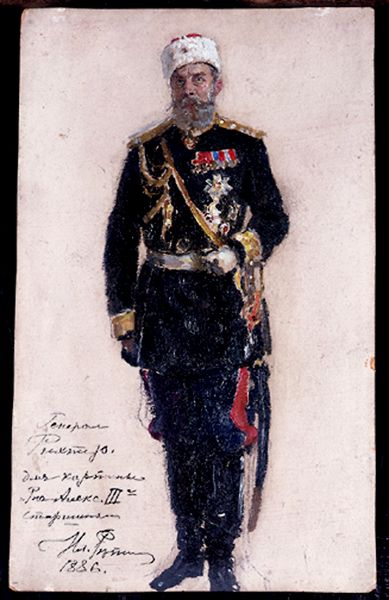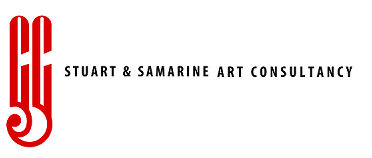Repin General Richter

Ilia Efimovich Repin (1844-1930)
Study for the figure of General Richter for the massive painting of the Coronation speech of Alexander III, now in the Tretyakov Gallery
signed, inscribed and dated 1886, oil on paper
Born in Chuguyev in Little Russia (Ukraine). Received his first painting lessons from an icon painter and local artists. Studied at the Society for the Encouragement of the Arts in St. Petersburg under I. Kramskoi (1863), and then at the Imperial Academy (1864-71). Was awarded a scholarship by the Academy in 1873-6 to visit Italy and France. Became a Professor of the Academy and taught there (1894-1907). Also taught at Princess Tenishcheva’s studio. A Founding member of the Wanderers group of painters, and the greatest artist who subscribed to their ideals, of ‘social realism’ and ‘bringing art to the people’. His canvases dominated the artistic scene during the 70s and 80s, and were massively influential during the Soviet period, when great importance was ascribed to his role in the evolution of a national school of painting, and as a forerunner of Soviet art. Died at his home of Penaty north of St. Petersburg, which after the revolution was on Finnish territory. A productive artist best known for his monumental canvases depicting everyday life: The Volga Barge Haulers, Religious Procession at Kursk (both Russian Museum, St. Petersburg) etc. He was also a successful and prolific portrait painter.
